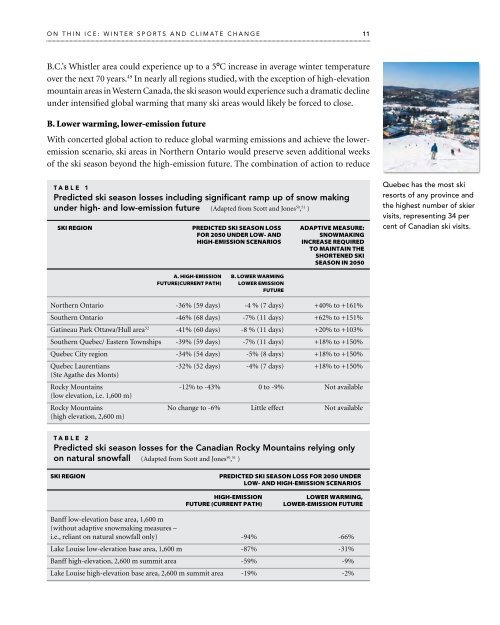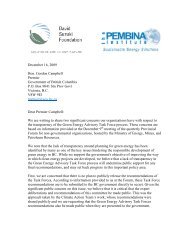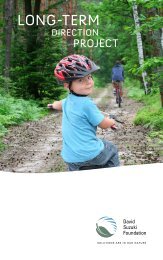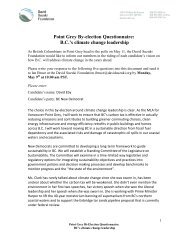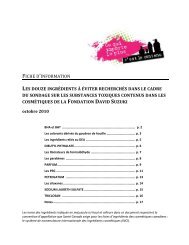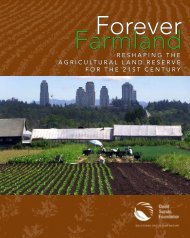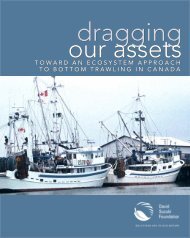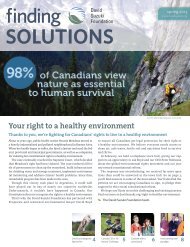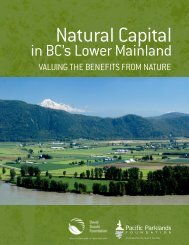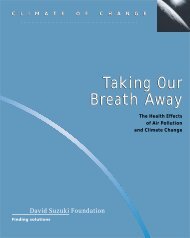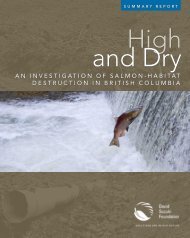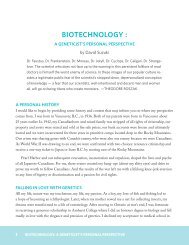On Thin Ice: Winter Sports and Climate Change - David Suzuki ...
On Thin Ice: Winter Sports and Climate Change - David Suzuki ...
On Thin Ice: Winter Sports and Climate Change - David Suzuki ...
You also want an ePaper? Increase the reach of your titles
YUMPU automatically turns print PDFs into web optimized ePapers that Google loves.
on thin ice: winter sports <strong>and</strong> cliMate change<br />
B.C.’s Whistler area could experience up to a 5ºC increase in average winter temperature<br />
over the next 70 years. 49 In nearly all regions studied, with the exception of high-elevation<br />
mountain areas in Western Canada, the ski season would experience such a dramatic decline<br />
under intensified global warming that many ski areas would likely be forced to close.<br />
B. Lower warming, lower-emission future<br />
With concerted global action to reduce global warming emissions <strong>and</strong> achieve the loweremission<br />
scenario, ski areas in Northern <strong>On</strong>tario would preserve seven additional weeks<br />
of the ski season beyond the high-emission future. The combination of action to reduce<br />
TABLE 1<br />
predicted ski season losses including significant ramp up of snow making<br />
under high- <strong>and</strong> low-emission future (Adapted from Scott <strong>and</strong> Jones 50 , 51 )<br />
ski region Predicted ski seAson Loss<br />
For 2050 under Low- And<br />
HigH-emission scenArios<br />
A. HigH-emission B. Lower wArming<br />
Future(current PAtH) Lower emission<br />
Future<br />
AdAPtive meAsure:<br />
snowmAking<br />
increAse required<br />
to mAintAin tHe<br />
sHortened ski<br />
seAson in 2050<br />
Northern <strong>On</strong>tario -36% (59 days) -4 % (7 days) +40% to +161%<br />
Southern <strong>On</strong>tario -46% (68 days) -7% (11 days) +62% to +151%<br />
Gatineau Park Ottawa/Hull area52 -41% (60 days) -8 % (11 days) +20% to +103%<br />
Southern Quebec/ Eastern Townships -39% (59 days) -7% (11 days) +18% to +150%<br />
Quebec City region -34% (54 days) -5% (8 days) +18% to +150%<br />
Quebec Laurentians<br />
(Ste Agathe des Monts)<br />
-32% (52 days) -4% (7 days) +18% to +150%<br />
Rocky Mountains<br />
(low elevation, i.e. 1,600 m)<br />
-12% to -43% 0 to -9% Not available<br />
Rocky Mountains<br />
(high elevation, 2,600 m)<br />
No change to -6% Little effect Not available<br />
TABLE 2<br />
predicted ski season losses for the Canadian rocky mountains relying only<br />
on natural snowfall (Adapted from Scott <strong>and</strong> Jones 50 , 51 )<br />
ski region Predicted ski seAson Loss For 2050 under<br />
Low- And HigH-emission scenArios<br />
HigH-emission Lower wArming,<br />
Future (current PAtH) Lower-emission Future<br />
Banff low-elevation base area, 1,600 m<br />
(without adaptive snowmaking measures –<br />
i.e., reliant on natural snowfall only) -94% -66%<br />
Lake Louise low-elevation base area, 1,600 m -87% -31%<br />
Banff high-elevation, 2,600 m summit area -59% -9%<br />
Lake Louise high-elevation base area, 2,600 m summit area -19% -2%<br />
11<br />
Quebec has the most ski<br />
resorts of any province <strong>and</strong><br />
the highest number of skier<br />
visits, representing 34 per<br />
cent of canadian ski visits.


